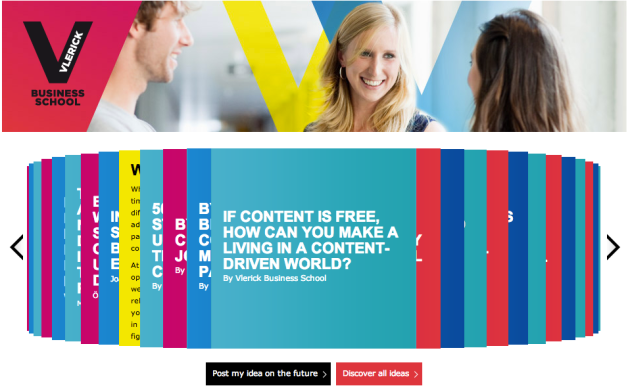Some craftwork at Vlerick
March 23, 2013 Leave a comment
Sometimes EMBA classes at Vlerick can take an unexpected turn and we end up creating something with our hands instead of tinkering with Excel, a calculator or simply our brain (it happens … sometimes). Last week Kosta Perric came as guest speaker for the course of Value-Added Entreprise IT. Kosta Perric is working at SWIFT and co-founded of Innotribe but is also a contributor to Forbes.com and an avid user of web 2.0 (Twitter, Google+, blog, etc.). As nearly all people working in and around innovation I’ve seen so far, Kosta Perric uses a Mac for his presentations ;-)
As I mentioned earlier he explained the innovation process and specificities at SWIFT/Innotribe with the castle and sandbox metaphor, something a bit similar to open innovation or Jef Staes’ red monkey (also seen previously here). If you are interested here is a very short summary of the presentation or watch the video below on the creation and purpose of Innotribe (the Innotribe channel on YouTube is also very nice to follow).
By the way, Kosta very briefly mentioned it but the metaphor is also the title of his book, The Castle and the Sandbox (sic) (but, unlike Jan Vermeiren, Kosta did not bring a free copy for each of us). Kosta’s blog has also a summary of the book.
And that’s when craftwork happened. On the second part of his talk, Kosta Peric asked us to work a little bit and, given a box of very fancy material, asked us to build what we thought was the castle and the sandbox. The message is simple, repeated several times and made ours by translating it into concrete craftwork … The methodology of knowledge transmission was also part of the learnings. Here are some pictures …
Ok, I also have a video of somebody we discovered has storytelling talents but here I will only share the official workshop video :-)
See you soon for new adventures!

